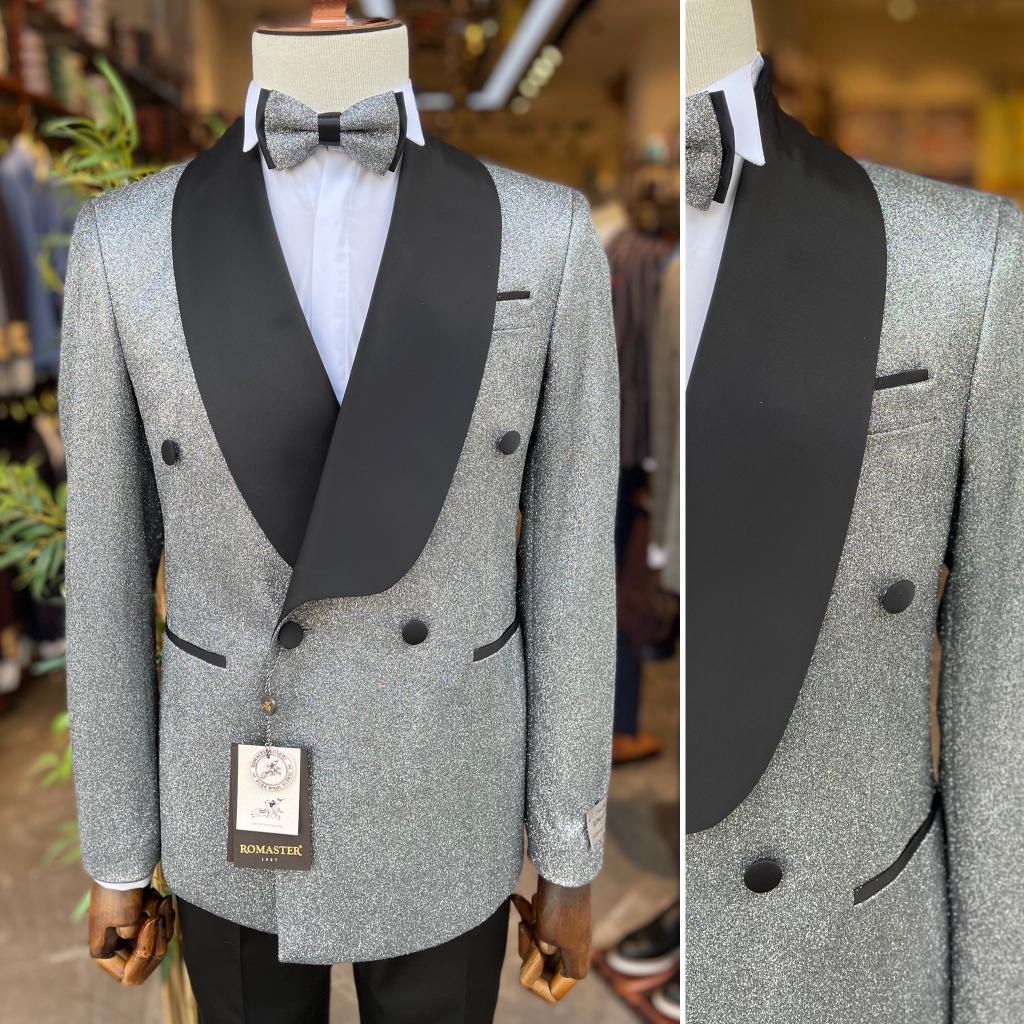Outfitting an entire wedding party, with all of the different sizes, can be intimidating if you are ordering online. If you go to a good suit store, like The Suit Depot's Oak Park, Michigan store, we can measure each of the groomsmen, fit them properly, and then alter their suits with the help of our in-house tailor. If you are ordering your groomsmen's suits online, here are some guidelines for getting the sizes right.
Record individual measurements.
Start by having each of the groomsmen watch our video, "How to Calculate Your Size: Blazers/Sport Coats and Pants."
The first, and most important, measurement is the chest measurement, because this will determine your jacket size. For example, if you measure 40 inches in the chest, your jacket size will be a 40. When measuring your chest, be careful not to slouch or puff your chest out. Wrap the tape measure around the fullest part of your chest, which is typically under the armpits.
Once you know your jacket size, figure out your jacket length. Suit jackets come in four lengths: short, regular, long, and extra long. Generally, if you are between 5'4" and 5'8", your jacket size is a short. If you are between 5'9" and 6', your jacket size is regular. If you are between 6'1" and 6'3", your jacket length is long. Between 6'4" and 6'9" is an extra long jacket length. While you can just use your height to determine your jacket length, using your exact measurement is more accurate. To measure your jacket length, take the measuring tape from the top of your shoulder and let it hang down to the bottom of your pants zipper. Between 28 and 29 inches is a short; between 30 and 31 inches is a regular; and between 31 and 33 inches is a long. Anything longer than 33 inches is an extra long jacket size.
To get an even more exact fit, measure your shoulders. Start at the right shoulder point, stretch the tape measure across your collar bone, and end at the left shoulder point. Look for suit jackets where the shoulder measurement is within one inch of your shoulder measurement. With most ready-made suits, this will not be an issue unless you have particularly large or small shoulders.
Then measure your sleeve length. The sleeve length is the easiest to alter. Most suit sleeves can be shortened as much as needed, or lengthened by about one inch. The sleeve measurement starts at the top of your shoulder and ends at the top of your thumb knuckle.
Now measure for the pants. The first measurement is the waist. Wrap the tape measure around your waist just above your belt, between your belt and your bellybutton. Don't worry if the waist of the pants is not exactly the size of your waist; most pants can be taken in or let out in the waist 2 inches by at tailor. Do not base your dress pants size on your jeans size. Most jeans are vanity sized, and they stretch. Your dress pants size will likely be larger than your jeans waist size.
With many off-the-rack suits, the jacket and pants are sold as one unit. They are sold by the jacket size. In that case, the size of the pants are what is known as a "drop six." If you deduct six from the size of the jacket, that is the size of the waist of the pants. For example, if you buy a size 40 jacket, the waist of the pants will be size 34. Again, there is generally two inches built into the waist of the pants that can be let out or taken in.
Most suit pants come unfinished, so you'll have to have them hemmed to the proper length. In some cases, the pants will come pre-hemmed by the manufacturer. (All of our pre-hemmed pants are listed as such.) In this case, you'll need to know your inseam length. On the outer side of your foot, step on the tape measure with three inches under your foot. Run the tape measure up the outside of your leg to the top of your waist. Whatever the measurement is, deduct ten from it and that is your inseam measurement. For example, if you measure 42 inches, your inseam would be 32 inches.
Choose a slightly larger size if he is between sizes.
If in doubt, or if measurements fall between her two sizes, it's usually safer to choose a slightly larger size. It is easier for a tailor to tweak a slightly oversized suit than it is to adjust the size of an undersized suit.
A Note for Portly Men
Unfortunately, many wedding suits do not come in portly sizes. If there is a member of your wedding party who wear executive cut suits, have him size up in a regular suit. The belly measurement will be the size of the suit. Please read: The Portly Man's Guide to Buying a Suit.
Arrange a wedding consultation.
The Suit Depot offers wedding consultations. A member of our staff will meet with you in our Oak Park, MI store, where you can try on floor models of the suits you plan to order. Our Style Consultants can advise you on sizes, colors, and styles. If you are unable to come to our Oak Park, MI store, a customer service rep on Facebook (message us) will be able to advise you, or you can call the store to ask for help.
Related posts:



